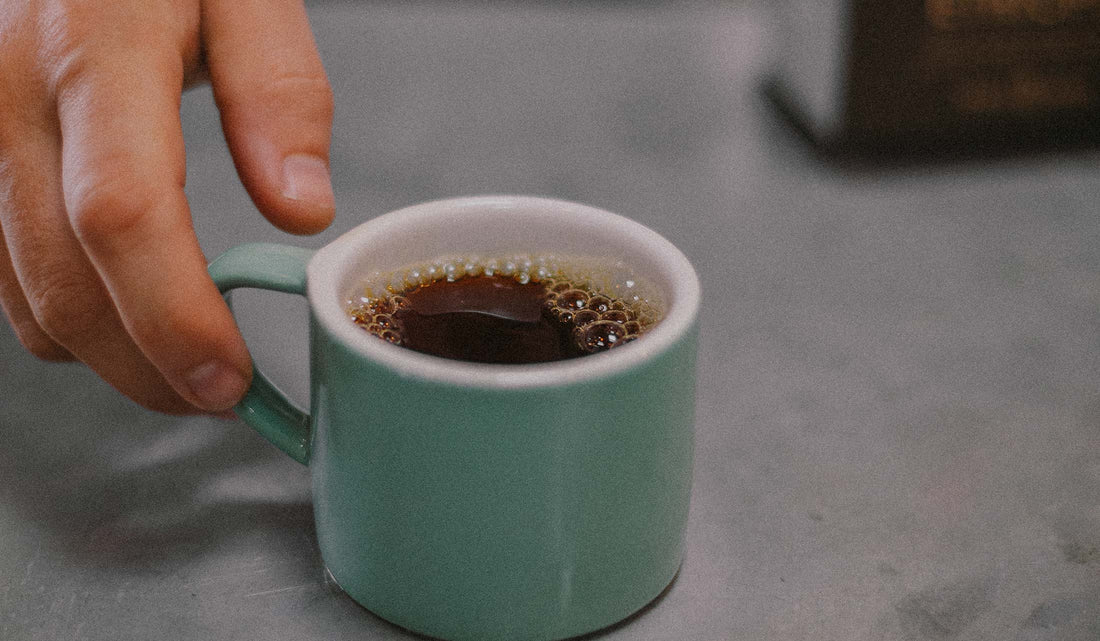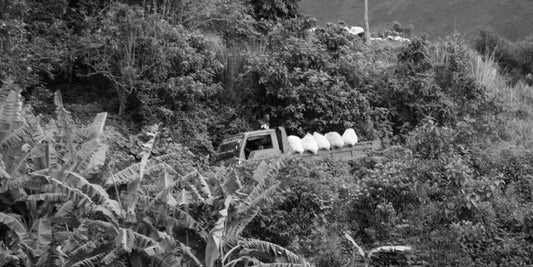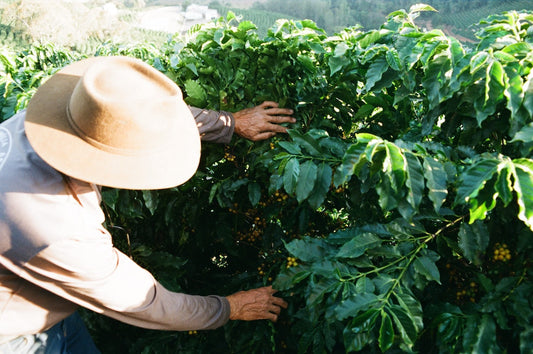
Around the World in Coffee Part 1: Brazil
Got any summer holiday plans? Course not! We’ve started this blog series to take you on a journey through the different coffee producing countries around the world. Since none of us will be going abroad anytime soon, we thought this was the next best thing. It’s sort of like virtual backpacking, except instead of finding yourself you just find out loads about coffee. You’re welcome. At least it’ll be handy for any upcoming pub quizzes. At least those are back again, hey? Small wins.
Let’s kick things off with the world’s leading coffee producer – Brazil. Got your passports ready?
For the last 150 years, Brazil has dominated the coffee industry. In fact, it still continues to today and it doesn’t look set to change any time soon. We’ve even got some chunky stats to blow your mind. In 2016 it’s thought that 2.59 million metric tonnes of coffee was produced in Brazil alone (accounting for 26% of the total global production). Last time we checked, that’s a lot of flat whites. No country can really compete with the scale of coffee production in Brazil and there are a few reasons for this.
Firstly, Brazil is massive. It’s the 5th largest country in the world and has a landmass of 8,515,767 square kilometres. Compare that to the UK’s landmass of a measly 242,495 square kilometres and it puts the sheer size of the country into perspective. Having this much land to grow coffee on is a big contributor to their stronghold over coffee production.
Secondly, it is located geographically in the absolute golden spot to produce the perfect climate for growing coffee. Most of Brazil falls within “the tropical zone” (sounds like a dream right now) which is a region of Earth surrounding the equator. This means there is a temperate tropical climate, little frost, ample sunshine and plenty of rainfall – basically everything that coffee loves. Yet another thing working in their favour.
The topography of Brazil is also a pretty unique piece of the puzzle. A large percentage of the country consists of flat rolling lowlands and a lot of the coffee grown is considered low altitude (especially when comparing it to other coffee-growing countries around the world). While this doesn’t always produce the most dense and high grade coffee, it does make things easier during harvesting as the accessibility for machinery is easier, again resulting in higher yields.
HISTORY OF COFFEE IN BRAZIL

The history of coffee in Brazil has been a bit of a tumultuous ride and could probably even be a blog post in its own right but we won’t bore you with that right now. Historically, Brazil has dictated the global price of coffee which has had a ripple effect throughout the industry. As an example, if Brazil had a really successful growing season and overproduced coffee, the market would become flooded and prices would plummet as a result of oversupply. The Brazilian government attempted to control the fluctuation in prices by introducing the practice of valorization in the early 1900s. This was designed to stabilise the price of coffee by buying up stock at an inflated price from producers when the market was low and then holding onto it until the market was high. This turned out to be a pretty unsustainable way to control the market and resulted in the government burning almost half a million tonnes of stockpiled coffee in a desperate attempt to reinvigorate the prices. Unfortunately with little success.
New rules have since been introduced to better control this volatile market and they have somewhat helped to stabilise global prices of coffee and fluctuations are no longer so extreme. Saying that, it’s still commonly agreed in the coffee industry that “if Brazil sneezes, the rest of the world catches a cold”.
GROWING REGIONS
There are five main regions for coffee in Brazil; Minas Gerais, Bahia, Espírito Santo, Paraná, and São Paulo (Minas Gerais being the most prevalent coffee producing state). Many farms throughout Brazil are pretty large scale and are very mechanised. Many of them are large enough to export and market their own coffee, such as the famous Daterra estate. Even relatively small farms in Brazil are still pretty sophisticated and many of them are really progressive in terms of environmental and social sustainability.
As an example, our Brazil Fazenda Paraiso – which is a 50% component in our house blend, The Truth – is grown by Guy Carvalho who is a great example of responsible farming with biodiversity at its core. He acquired his farm back in 1990 and it’s part of several initiatives to improve high-quality production in Brazil. Fazenda Paraiso is situated in Cabo Verde, a traditional coffee region that has a great microclimate and ideal conditions for growing coffee, but what’s incredible is that more than 20% of his farm is in preserved, indigenous forest.
There are also several water springs protected by native vegetation. The dried coffee husks from processing are returned to the tillage in the form of organic compost to further enrich the soil. The farm also has a beekeeping neighbour, which means there’s a good quantity of natural pollinators during flowering. Because of the farm’s mountainous location and the forests that run between the coffee plantation, there’s a large ecological corridor that allows the transit of wild animals. Sounds pretty far-fetched, but it’s genuine and we think it’s rad.
We’ve talked about it before, but for coffee to be graded as speciality, it has to achieve a certain score (80+ points). Growing conditions and thus quality have a big impact on that score, so it’s in the farmer’s interest to grow their crop responsibly, to achieve a better price.
BRAZILIAN COFFEES IN YOUR MOUTH
So what about taste then? We’ve tasted a lot of coffees from Brazil over the years and you might have seen us mention that “quintessential Brazilian thing” from time to time. More often than not Brazilian coffees are sweet, have a soft acidity and a delicious combination of chocolate, nut and dried fruit notes, if it’s good coffee that is. If it’s an average or low quality Brazil you can expect a nutty or cereal character to dominate.
For some people, this is all too safe, but we couldn’t think of a better coffee for a Sunday morning cafetière. The generally low growing altitudes in Brazil contribute to a silky, and buttery texture. That being said, we’re starting to see a lot more rare and experimental coffees being produced in Brazil (as processing technology becomes more widespread and advanced) which are up there with some of the most bonkers coffees we’ve tasted.

We’ve got a really classic Brazil coffee in our core range which is grown on a farm called Pe De Cedro in Southern Minas Gerais. It has notes of white chocolate, macadamia nut and peanut butter, complemented by a low acidity, fantastic sweetness and a creamy finish. Since launching our three-tier range we’ve also released three different Brazilian coffees – the most recent release was seriously rare and very special. Grown by Daterra in the Cerrado, it had some pretty wacky flavour notes. Ready? Whiskey, dark florals, orange, plum wine. It really was insane.
All in all, it’s fair to say that this behemoth of the coffee industry has a lot to offer. And, with the advances in processing methods and some more experimental coffees being produced, we’re pumped to see what the future holds with coffees from Brazil and we’ll make sure you know about it when we find another gem!




